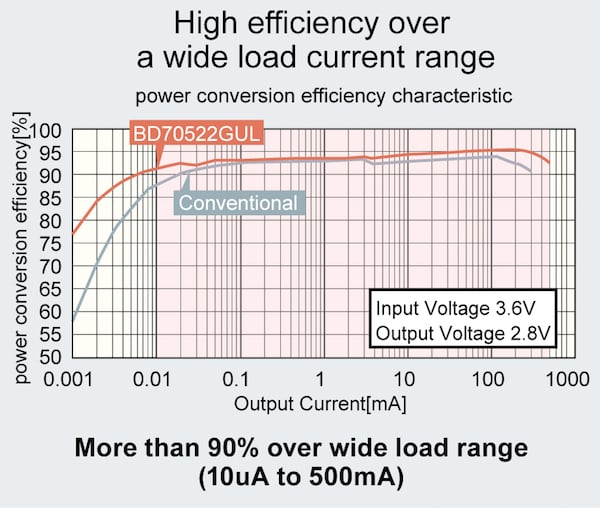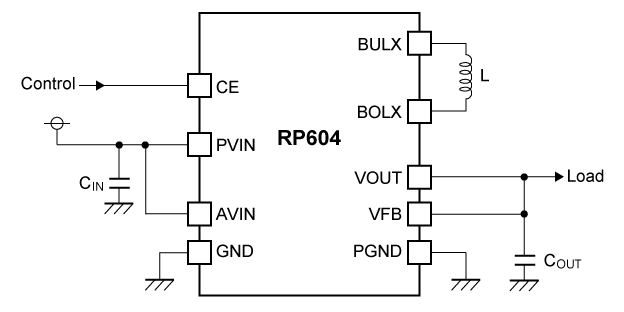A new generation of DC-DC
converters is lowering current consumption to unprecedented levels while
aiming to offer greater design flexibility and space on the board.
The
need for ultra-low-current consumption in portable designs is leading
to the creation of a new generation of DC-DC converters that raise the
bar on power conversion efficiency while lowering the current load to
unprecedented levels.
First,
the ultra-low-current consumption offered by these DC-DC converters
creates design flexibility and board space for integrating new features.
Second, it facilitates much longer battery life for the Internet of
Things (IoT) and wearable applications.
These
DC-DC converters are designed for applications that mostly remain in
sleep mode and wake up periodically to perform a measurement or transmit
data and then return to the sleep mode again. Here, DC-DC converters
prolong the battery life and thus allow designers to select a smaller
sized battery for their portable and wearable devices.

A closer look at the power conversion efficiency offered by ROHM's new DC-DC converter. Image courtesy of ROHM Semiconductor.
In
its new DC-DC converters, ROHM has implemented its proprietary Nano
Energy technology which, in turn, relies on control circuitry, an analog
element layout optimized for the power supply design, and 0.35 µm
BiCDMOS power processes. Then, there is the Seamless Switching Mode
Control (SSMC) function, which automatically switches the load mode
based on load current across a wide range.
ROHM
claims that the BD70522GUL power chips can extend the battery life by
1.4x when operating in no-load or standby mode. The Japanese chipmaker
is targeting its new DC-DC converters at compact battery-driven IoT
devices like sensors nodes and industrial products such as alarms and
electronic shelf labels. Check out How to Run from a Coin Cell for 10 Years for a demonstration.
From Buck to Boost
Next,
there is new Buck-Boost DC/DC converter for wearable devices from Ricoh
Electronic that consumes only 300 nA. That shows how the Japanese
semiconductor firms are focusing on reviving the supply voltage design
for the IoT era. Ricoh is targeting this DC/DC converter at the IoT and
wireless modules requiring lower power consumption for extended battery
life.

The block diagram of the Buck-Boost DC/DC converter. Image courtesy of Ricoh Electronic.
The
new power device from Ricoh comes integrated with multiple protection
circuits. For a start, an under-voltage lock-out circuit disables the
DC/DC converter in case the input voltage drops below a minimum
threshold. Second, a soft-start circuit controls the output voltage to
ramp up smoothly and thus prevents any output overshoot and undershoot
during the start-up period.
Third,
the Lx current limit circuit prevents the peak current through the
inductor to exceed a specific maximum current threshold. Finally, an
output overvoltage protection turns off both the P-channel and N-channel
MOSFETs and thermal protection, shutting down the DC/DC converter in
case the junction temperature increases above 140ºC.
Have more examples of DC-DC converters designed for the age of the IoT? Let us know in the comments below.







No comments:
Post a Comment